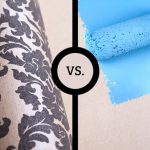Are you an artist who loves painting? While some artists tend to stick to only one type of painting medium, others prefer experimenting with different types because they love the creative freedom and expression they get from creating different textures. But one thing that sometimes artists struggle with is choosing the right brush for their creations.
We know that brushes are indispensable tools in the artistic process, and as such, they play a crucial role in bringing your creative visions to life. So, if you want to take your skills to a whole new level, try to learn about the differences between watercolour, acrylic and oil painting and the different brushes used for them. This insight will help you find artistic brushes that can truly transform your artwork into excellence.
Types of Artists’ Brushes: Acrylic vs. Oil vs. Watercolour

Paintbrushes come in various shapes, sizes and materials, and each type of paintbrush serves a unique purpose in the artistic process. If you get a pile of different paintbrushes, you can notice subtle or some more obvious differences between them, such as the shape, size and bristles.
Depending on the painting medium, artists’ paintbrushes are categorised as acrylic, oil, or watercolour and here are some basic differences between each.
Acrylic
The name’s pretty self-explanatory – acrylic brushes are designed specifically for use with acrylic paints. These are typically made from synthetic materials that mimic the feel and function of natural bristles. Their bristles are durable and resilient, which makes them suitable for the thick consistency of acrylic paints.
This is a very important aspect. Although you can use natural bristles for acrylic painting, the outcome won’t be the same as when you do it with synthetic fibres.
Natural bristles are more susceptible to damage when painting with acrylic and can become stiff or damaged over time. Whereas, synthetic bristles are better for painting with acrylics because they can withstand the harsh and abrasive nature of acrylic, without being damaged. But in the end, it mostly comes down to the personal preference of the artists themselves about whether they choose natural or synthetic bristles for their acrylic paintings.
Oil
Oil paints are known for their slow drying time and rich, butter-like consistency. As such, they require specific bristles that can hold a considerable amount of paint, while providing excellent control over the application.
The bristles of oil brushes are typically made from animal hair, such as hog or sable, although most artists prefer hog hair bristles because they are naturally stiffer. You will often find natural bristles to be split into two or three at the tip, which allows better paint retention at the tip of the brush and delivers smoother application.
Ranging from flat and bright to round and filbert, oil brushes come in different shapes, each offering different texture effects.
Although most are made from hog or sable hair, you can still find vegan alternatives made from synthetic fibres designed to mimic the feel of natural animal hair. They are super durable and provide almost the same quality as natural brushes.
Watercolour
Watercolour brushes have soft and absorbent bristles that can be made from either natural hair or synthetic fibres. They are pretty versatile when it comes to the shape. They can be round, angular, flat, in the shape of a fan, liner and Albert and they come separately or in a set of several different brushes.
You can even find synthetic watercolour brushes that are suitable for any type of paint, which makes them an excellent and overall versatile choice for any artist.
Size Matters: What to Consider

Size is another important thing to factor in. Regardless, if you’re painting with acrylics, watercolours or oils, there are different sizes designed for achieving different results.
The Scale of Artwork
When it comes to acrylics and oils, larger brushes are better for covering larger areas of your canvas while smaller ones are preferred for painting finer details or intricate areas of your artwork.
Use larger watercolour brushes for washes and broader strokes and smaller ones for adding fine details and delicate lines.
The Level of Details
If you’re trying to create a detailed acrylic painting, choose smaller brushes with fine bristles to help you achieve precise lines, intricate texture or delicate brushwork. The same goes for oil painting, although, oil paints do, however, allow for versatile brushwork.
For watercolour painting, smaller brushes with fine and pointed tips are excellent for adding textures, intricate details and nuances to your watercolour painting. After all, watercolour painting often involves transparency and layering to create depth and dimension.
How to Properly Care for Paintbrushes

The most tedious part of the entire artistic process is surely washing and cleaning your brushes once you’re done with your work. Yes, cleaning the bristles is essential if you want your brushes to last long and maintain their original shape for as long as possible.
When it comes to acrylic brushes, you can either lay them flat on a clean towel and let them dry, wash them with mild soap, massage the bristles gently and rinse thoroughly with water or rinse them with only water after each use.
For oil brushes, before washing, make sure to wipe the paint off the bristles with a rag or paper towel. Then, dip the bush in a solvent such as turpentine and while doing so, just swirl the brush around to loosen up the paint. Once you’re done with the solvent, then go ahead and wash it with mild soap and water to remove any paint residue.
Use mild soap for cleaning watercolour brushes and then rinse them thoroughly with water.
Pro tip: Always reshape the bristles of the brush once you’re complete with the cleaning process.





















